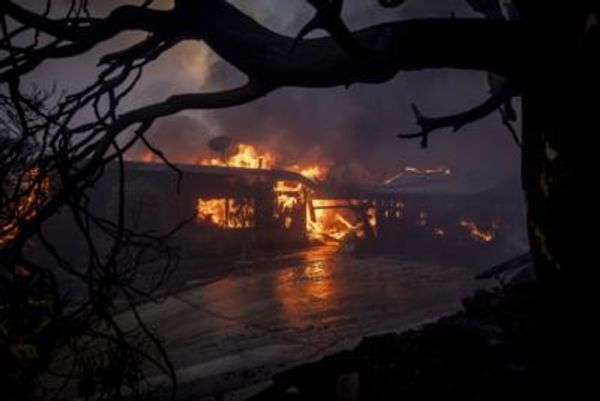
Relations between the United States and China are fraught, with escalating rhetoric and risk of miscalculation on both sides. Military affairs aren’t the only aspect of the bilateral relationship—but they’re the most dangerous one. As China’s security presence expands to follow its economic interests, the two militaries will come into more and more frequent contact.
But the big question is: Who is in charge over on the Chinese side? Chinese President Xi Jinping has put considerable effort into shoring up Chinese Communist Party (CCP) control of the People’s Liberation Army (PLA)—but as with any military, there’s a big gulf between the intrigues at the top and the grunts at the bottom. When a game of maritime chicken results in ships colliding or a border argument escalates to gunfire, who is making the decisions that follow, and that could escalate, with horrific consequences? Is the PLA capable, or even interested, in defusing and avoiding dangerous low-level encounters? Or will a combination of increasing confidence and fervent nationalism result in catastrophic miscalculation?
Two examples from China’s history—one from the era of Mao Zedong’s Cultural Revolution and one from just a year ago—serve to illustrate how uncertainty over Beijing’s civil-military control poses real escalation risks and how the Chinese side might avert them.
In 1969, Chinese forces instigated a brutal ambush on unsuspecting Soviet border guards at Zhenbao Island, a contested bank on the Ussuri River. After numerous rough but not lethal hand-to-hand scuffles in the past, the island became the epicenter of a pitched battle and weeks-long exchange of fire. The initial ambush, conducted with small arms, escalated into deployment of heavy armor supported by rocket artillery. Hundreds of people were killed. Within two weeks, both sides were contemplating the possibility of a nuclear exchange.
Even after a cease-fire was declared, the prospect of nuclear weapons use lingered for years afterward. At the time, it was difficult to discern who had initiated the clash, at what level, and for what reason. China held clear conventional superiority on the ground but was wildly ill-equipped to weather a nuclear exchange with the Soviet Union. That fact alone led some to assume the clash was merely tactical freelancing by an aggressive local commander because surely no national leader would gamble with the fate of the nation against a vastly superior nuclear power.
In more recent scholarship, however, there is general consensus even among Russian and Chinese researchers that Beijing had begun planning for the attack as early as 1968 and that it was carefully orchestrated under Mao’s direct guidance to generate popular sentiment for his domestic agenda. Others attribute the clash to a renegade Lin Biao, Mao’s top general, who was later purged after a (supposed) failed coup attempt in 1971, though that explanation may have only served as a way to distance Mao from the attack and discredit Lin. Half a century later, it is still not entirely clear who made the decision to attack at Zhenbao Island.
Equally, we still do not have all the details of the high-altitude melee between Indian and Chinese border guards that took place last June at the Line of Actual Control (LAC). Beijing only confirmed last month that four PLA soldiers were killed, and that number is a fraction of those that India reported—their own losses totaled at least 20 people. Chinese bloggers have been arrested and charged for challenging Beijing’s own figures, adding a further layer of insecurity and uncertainty.
The events at the LAC share some characteristics with the Zhenbao Island incident. First, Beijing created a series of confrontations in the area, leading with a deployment of considerable force and creating a decisive advantage in strength, particularly at the point of the incident. India’s scramble to deploy troops to reinforce its positions is reminiscent of the Soviet Union’s own border crisis half a century earlier. And, while China may not be going through a period of internal strife at quite the scale of the Cultural Revolution, it has seen no less than 35 Central Committee members disciplined or purged since Xi took power—an unprecedented figure. Xi’s vision has come under increasing fire as unified opposition to Beijing has increased in response to his aggressive foreign-policy moves and abolition of term limits.
Using armed struggle to motivate and unify the party is still part of the CCP playbook. However, previous PLA incursions on India’s border appeared politically inconvenient for Xi. In 2014, he appeared unaware that his own troops had crossed into Indian-controlled territory ahead of his meeting with Indian Prime Minister Narendra Modi. Purges of general officers and reorganization of PLA units on the borders in 2018 also lend to the impression that the PLA was acting independently of the party’s control but, much like in 1969, this could also be explained as plausible deniability for Xi.
These two events, or series of events, look very similar on the face of it. Most of all, scholars just don’t know who was really running the shows. Either could have been initiated by an uber-nationalist local commander or by the general secretary of the CCP. At first blush, neither appear to have been actions designed primarily to signal Soviet or Indian leaders, but both created tactical situations that might have led to war with a nuclear power. The United States needs to prepare itself for these types of situations, where the actions of small, isolated units might have global impacts, because they will become increasingly common as tensions with Beijing reach new heights.
Fortunately, handling crisis flash points on the ground is something the U.S. military does well. The United States armed forces use a colloquial term to refer to the responsibility placed on its noncommissioned officers—strategic corporals. Coined by Gen. Charles Krulak in 1999, the strategic corporal was the focus of a fictional vignette that painted a picture of a “three-block war,” in which a squad-sized unit deals with a spectrum of challenges—from humanitarian aid to armed conflict—in the space of a few city blocks.
Krulak painted a picture of an increasingly complex operating environment in which the actions of individuals, whether good or bad, would have strategic effects. His message, drawn from the catastrophe in Mogadishu in 1993, was that the future of warfare would depend on small unit leaders and actions at the lowest level, relying on personnel to make “well-reasoned and independent decisions under extreme stress.” That attitude remains central in the U.S. military. “Mission command” is a touchstone, encouraging decentralized authority and creativity on the battlefield, in the air, and on the sea.
The PLA does not have strategic corporals nor does it necessarily embrace independent decision-making at the lowest tactical levels. Within the ranks of all branches of China’s military apparatus are party representatives whose job it is to ensure the military remains the party’s instrument or, in the parlance of Mao, that the “party commands the gun.” These political commissars are responsible for things like political education and troop morale but can also take command in crisis.
In 1988, two political commissars took direct command roles in the Johnson South Reef Skirmish, commanding a frigate as well as a group of knife-carrying raiders that took direct action against Vietnam’s navy near the reef. Today, political commissars are directing psychological warfare efforts against Taiwan as well as China’s political propaganda in the South China Sea, but it’s also likely they’re involved in provocative moves like dangerous maneuvering of ships in response to U.S. Freedom of Navigation Operations and PLA confrontations along the Sino-Indian border.
Ships and submarines in the People’s Liberation Army Navy have their own embarked political officers who carry the same rank as the ship’s commanding officer and can contradict the military commander if they see fit. This dual-command system necessitates collective decision-making, which does not lend itself to agility in times of crisis. As past events highlight, this arrangement does not always result in PLA actions that reflect party intentions nor does it negate the possibility of miscalculation or mistakes at the tactical level. The cultivated opacity surrounding the PLA’s activities only serves to heighten the risk.
This deliberate confusion has an analogue in China’s media environment and outward expressions of online nationalism. Outlets like the histrionic Global Times publish op-eds warning of China’s willingness to teach “bitter lessons” to its adversaries, and an army of internet trolls swarm the slightest criticism of the genocide in Xinjiang. But although extreme nationalist positions might be reflective of the mood at the top, they are not necessarily directed by it. Xi and his party are certainly not oblivious to the media battle nor is the CCP entirely separated from it as its Ministry of Foreign Affairs engages in online absurdities. Xi’s government can restrict internet access and censor what it finds objectionable, but exactly where Xi’s control and influence end is unclear—and even though he controls much of the process, Xi risks unleashing forces he can’t control.
Xi’s purges of the PLA highlight that the issues may go deeper than miscommunication or misalignment, leaning instead toward factionalism and rifts between Xi and the PLA itself. His rebalancing of the military system toward its political commissars also seems to hint at uneasiness between the party and its army. Outsiders also have yet to fully grasp the impacts of the CCP’s sweeping Patriotic Education Campaign and growing nationalism within the PLA. How will an educational background steeped in historical grievance affect individual troops entering high-stress situations centered on sovereignty? Last year’s fatal incident on the Line of Actual Control is a cause for concern, with PLA soldiers reportedly crafting medieval melee weapons from steel and nails. If Beijing continues to deploy its forces in extremely provocative ways—whether it be through unsafe air intercepts, close maneuvering and radar targeting at sea, or invasions of disputed territory—this combination of imperfect control and new nationalism creates enormous risk for miscalculation and escalation.
There is a dilemma here for U.S. forces as well. The PLA has undertaken brash courses of action in the past, inviting the possibility of nuclear war (mostly) on purpose. However, the potential for provocations caused by so-called “rogue commanders” is also present as is the possibility for plain human error. At the tactical level, there is no way to differentiate between a CCP-directed provocation and a local commander’s whim. At the operational level, Beijing has been resistant to engaging in good-faith efforts at creating off-ramps and hotlines that might lessen the risk of miscalculation in the future. Instead, CCP leaders use those mechanisms as strategic leverage. The opacity surrounding the events at Zhenbao Island and the LAC is not accidental; it is a weapon that is intended to force assumption of risk onto China’s opponents.
When Beijing is confident in its ability to control escalation or guarantee a particular outcome, it will engage in increasingly risky behavior. To date, the CCP has cautioned its forces not to fire the first shot with the United States, precisely because the party cannot be sure of the outcome. The stratified command structure and unresolved control issues are limitations on what the PLA can be trusted to accomplish, which is why professionalization and control of the military remain high priorities for Xi in his “great rejuvenation” campaign.
The U.S. system of delegated authority and its ability to rely on commanders to make real-time decisions are among its greatest assets in ensuring it retains escalation dominance vis-a-vis the PLA. Washington and the U.S. Defense Department should lean into this strength, which will require growing more comfortable with risk. At all levels, from political leadership to frontline troops, it is important to remember that not every provocative act is sanctioned by Beijing—but the outcome of each of them may reverberate globally.







